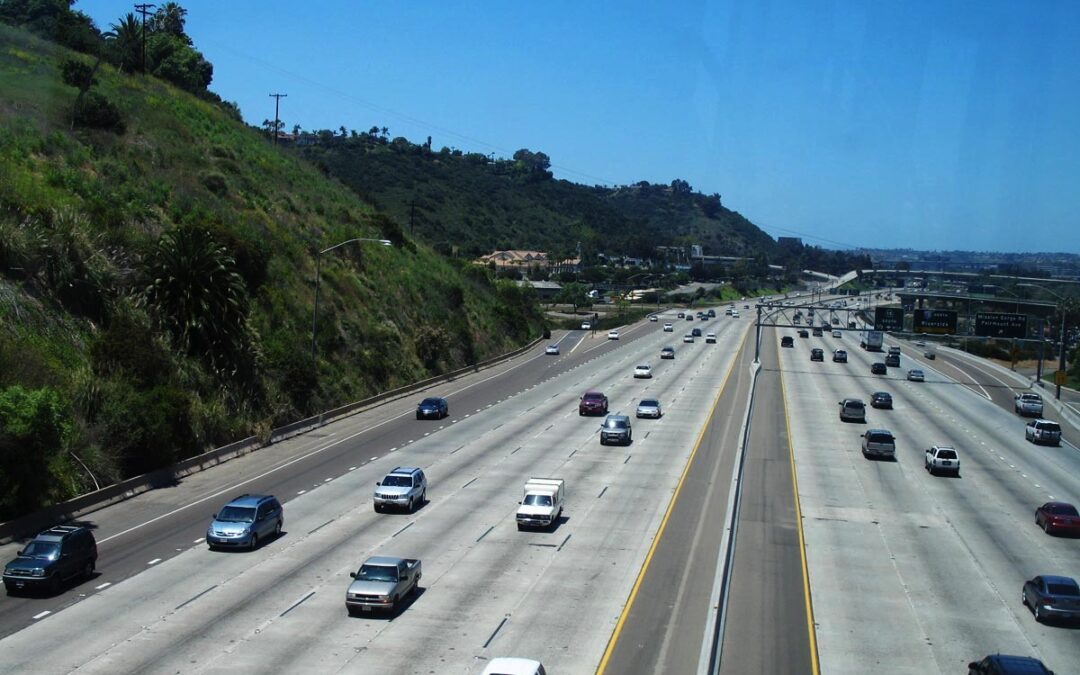Defensive Driving | Safe Spacing
Written By | Doreen Almirol | 20+ years CA DMV Licensed Driving Instructor
In the intricate dance of traffic, the concept of maintaining a safe following distance stands as a beacon of wisdom for drivers aiming to navigate the roads with prudence and foresight. Often touted as one of the cardinal rules of defensive driving, this practice is more than a simple guideline—it’s a critical strategy for ensuring not just personal safety but also the safety of those sharing the road.
In this comprehensive exploration, we will delve into the significance of keeping a safe following distance, emphasizing the practical application of the 10mph=1 car length rule.
The Anatomy of Safe Following Distances
Understanding the 10mph=1 Car Length Rule
The 10mph=1 car length rule serves as a foundational principle for maintaining a safe following distance. Let’s break it down: for every 10 miles per hour you are traveling, ensure a gap of at least one car length between you and the vehicle in front. This scalable approach provides a dynamic buffer that adjusts to your driving speed, offering a proportional response time in various scenarios.
- 20 mph: 2 car lengths
- 30 mph: 3 car lengths
- 40 mph: 4 car lengths
- 50 mph: 5 car lengths
- 60 mph: 6 car lengths
This rule transforms the abstract concept of following distance into a tangible, easily adaptable practice for drivers of all experience levels.
1 | The Buffer Zone || A Shield Against the Unexpected
Picture the road as a dynamic stage where the unexpected can unfold at any moment. The buffer zone created by the 10mph=1 car length rule acts as a shield, providing the precious seconds needed to react in the face of sudden stops, obstacles, or erratic driving behavior from the vehicle in front.
The extra space not only allows for a more gradual and controlled braking process but also opens up options for evasive maneuvers. In the event of an unforeseen circumstance, having this buffer zone can mean the difference between a near miss and a collision.
2 | Practical Application || Adapting to Traffic Dynamics
While the 10mph=1 car length rule is a powerful guideline, its successful application requires a nuanced understanding of the dynamics of traffic. In heavy congestion or stop-and-go situations, maintaining an exact car length per 10 mph might not always be feasible. In such cases, focus on creating a reasonable and safe distance, allowing for incremental adjustments based on the flow of traffic.
3 | Beyond the Numbers || Factors Influencing Following Distances
1 | Weather Conditions
Adverse weather can significantly impact braking distances. Rain, snow, or icy roads demand an extension of the following distance to accommodate for reduced traction and increased stopping distances. Defensive driving means adjusting your habits based on the conditions, ensuring that your safety margin remains intact.
2 | Road Surface
The quality of the road surface plays a crucial role in braking efficiency. Uneven or slippery surfaces may necessitate a larger following distance to counteract the potential loss of control. By gauging the road conditions and adjusting your following distance accordingly, you enhance your ability to navigate diverse terrains safely.
4 | The Psychology of Defensive Driving || Staying Ahead of the Curve
Beyond the mechanics of maintaining a safe following distance lies the psychological aspect of defensive driving. Cultivating a mindset of anticipation, where you constantly scan the road for potential hazards and adjust your following distance accordingly, is key to mastering this art.
5 | Education as Empowerment || Defensive Driving Courses
For those seeking to deepen their understanding of defensive driving, enrolling in a defensive driving course can be a transformative experience. These courses not only reinforce the importance of maintaining a safe following distance but also provide comprehensive insights into hazard recognition, emergency response strategies, and the psychology of safe driving.
6 | The Ripple Effect || Contributing to a Safer Road Culture
If you feel threatened or witness aggressive behavior that puts others at risk, consider reporting the incident to local law enforcement. Many areas have hotlines or online reporting systems specifically for aggressive driving. Providing a description of the vehicle, location, and behavior can help authorities address the situation.
Drive with Confidence & Master Defensive Driving
Elevate your driving with the 10mph=1 car length rule. Be a guardian of safety and a steward of responsible driving. Embrace this principle to create safer, more predictable roads. Join the collective commitment to a harmonious journey. As you drive, remember: the extra space you create today is the key to a collision-free tomorrow. Enroll in defensive driving courses—invest in safety, drive responsibly!




